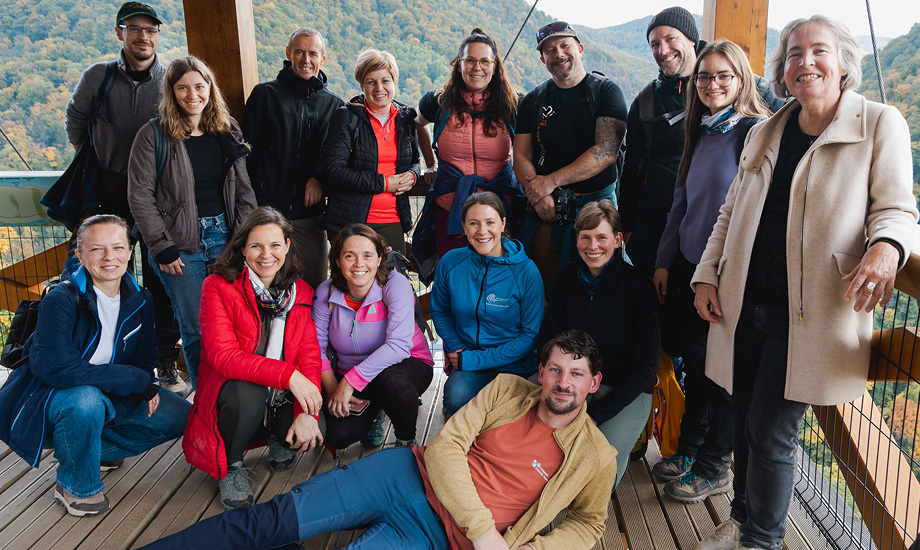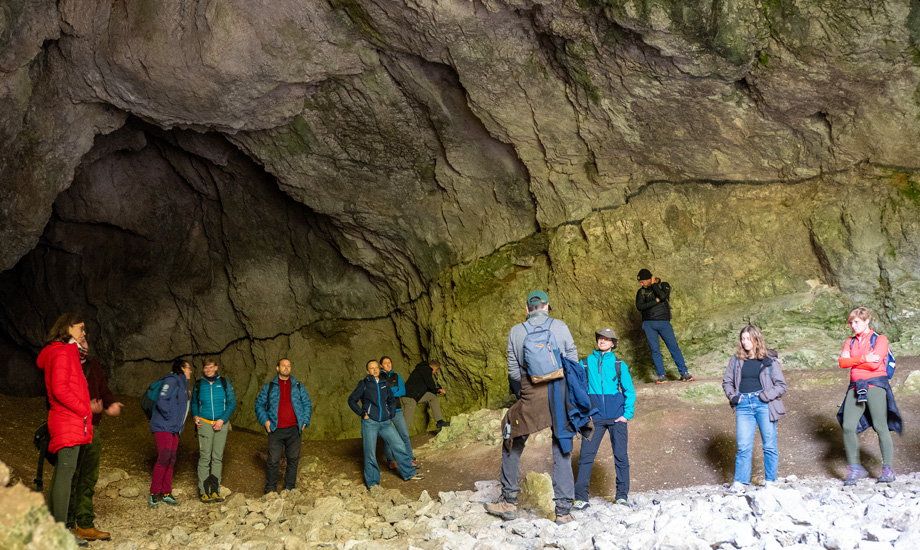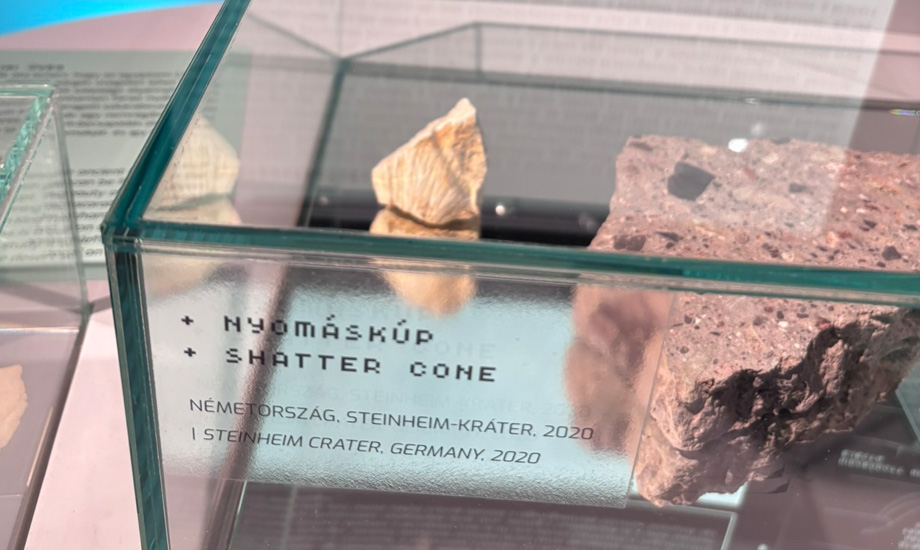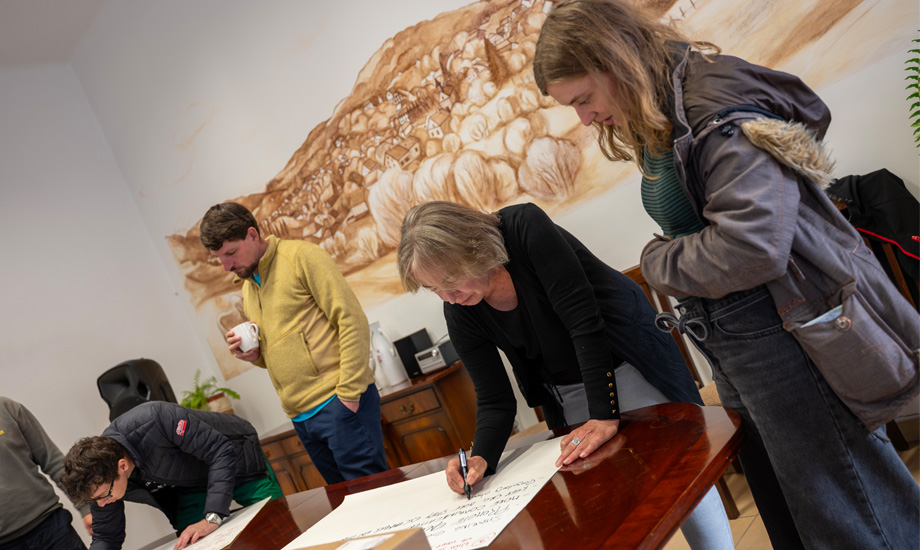Exchange and new ideas in the Bükk Region UNESCO Global Geopark
As part of the international Danube GeoTour Plus project, a three-day transnational workshop was held in mid-October 2025 at the Bükk Region UNESCO Global Geopark in Hungary.
The aim of the event was to jointly discuss, evaluate, and further develop the results and experiences from three project phases on visitor management. Representatives of all partner organizations, associated partners, experts, and other stakeholders from across the Danube region came together to discuss key challenges, solutions, and perspectives for the sustainable development of geoparks. The UNESCO Global Geopark Swabian Alb was represented by Prof. Heidi Megerle, Chair of the Scientific Advisory Board, and Teresa Mangold.
Workshops, exchange, and strategies
The focus was on presenting and evaluating previous project results, their efficiency and effectiveness, and strategies for transferring the findings to other geoparks. In addition, possibilities for greater involvement of disadvantaged groups and measures for data-driven and resource-efficient management of tourist visitor flows were discussed.
Two thematic workshops provided an opportunity for practical exchange: In the workshop on visitor counting devices, various technical systems and in-house solutions were presented, and experiences regarding location selection and data evaluation were shared. The workshop on social media and public relations highlighted which platforms are suitable for different target groups, how effort and benefits can be realistically weighed up, and how authentic communication can be achieved in geoparks.
Astronomy and Geopark Experience
Highlights of the event included a visit to the Bükki Csillagda with its observatory, interactive exhibition, and film in the planetarium about the Voyager 1 and 2 space probes, as well as an excursion to the Szeleta Park Information Center, including a hike to the cave of the same name. At the Szeleta Park Visitor Center, participants learned more about the karst landscape, cave life, geological finds, stalactites, and the flora and fauna of the region.
Sustainable, networked, and future-oriented
The workshops were accompanied by a project board meeting, a public media event, and an excursion to see examples of best practice in the geopark. The entire event was organized in an environmentally friendly manner—with sustainable travel, regional catering, paperless communication, and the option of hybrid participation. The meeting marked an important milestone in the further development of joint strategies, for example in marketing and data-based visitor management, and laid the foundation for the next phase of the Danube GeoTour Plus project.
Outlook
In the UNESCO Global Geopark Swabian Alb, the development of a digital application (app) is currently being planned as part of the Geopark Experience. In addition, the installation of visitor counting devices is being prepared. An exchange with the Styrian Eisenwurzen Nature and Geopark is being planned, with reciprocal visits to Austria and the Swabian Alb. The long-distance hiking trail there serves as a successful example and is considered an inspiration for new, sustainable geopark experiences.
Further information: Bükk Region UNESCO Global Geopark
-
 © Balazs MegyeriParticipants of the Danube GeoTour Plus workshop on the viewing platform in the Bükk UNESCO Geopark, Hungary.
© Balazs MegyeriParticipants of the Danube GeoTour Plus workshop on the viewing platform in the Bükk UNESCO Geopark, Hungary. -
 © UroshGrabnerExcursion participants explore the Szeleta Cave, which housed humans for over 130,000 years and gave its name to the Szeleta culture.
© UroshGrabnerExcursion participants explore the Szeleta Cave, which housed humans for over 130,000 years and gave its name to the Szeleta culture. -
 © Teresa MangoldRadiolarian limestone (left) from the Steinheim meteor crater near Heidenheim an der Brenz in the Szeleta Park visitor center.
© Teresa MangoldRadiolarian limestone (left) from the Steinheim meteor crater near Heidenheim an der Brenz in the Szeleta Park visitor center. -
 © Urosh GrabnerHeidi Megerle in front of the huge, life-size ice age cave bear statue.
© Urosh GrabnerHeidi Megerle in front of the huge, life-size ice age cave bear statue. -
 © Urosh GrabnerThe two representatives of the Swabian Alb Geopark: Prof. Heidi Megerle (left) and Teresa Mangold during the international exchange at the Bükk Geopark.
© Urosh GrabnerThe two representatives of the Swabian Alb Geopark: Prof. Heidi Megerle (left) and Teresa Mangold during the international exchange at the Bükk Geopark. -
 © BalazsMegyeriOne workshop focused on visitor counting devices. Experiences with different models were presented—from commercially available systems to proprietary technical solutions such as the device developed by Gergely Sipos. Participants discussed which factors are decisive when choosing a location and how the data obtained can be used for balanced visitor management.
© BalazsMegyeriOne workshop focused on visitor counting devices. Experiences with different models were presented—from commercially available systems to proprietary technical solutions such as the device developed by Gergely Sipos. Participants discussed which factors are decisive when choosing a location and how the data obtained can be used for balanced visitor management. -
 © Lara PikoThe international meeting focused on sharing experiences and reflecting on the project results to date.
© Lara PikoThe international meeting focused on sharing experiences and reflecting on the project results to date.